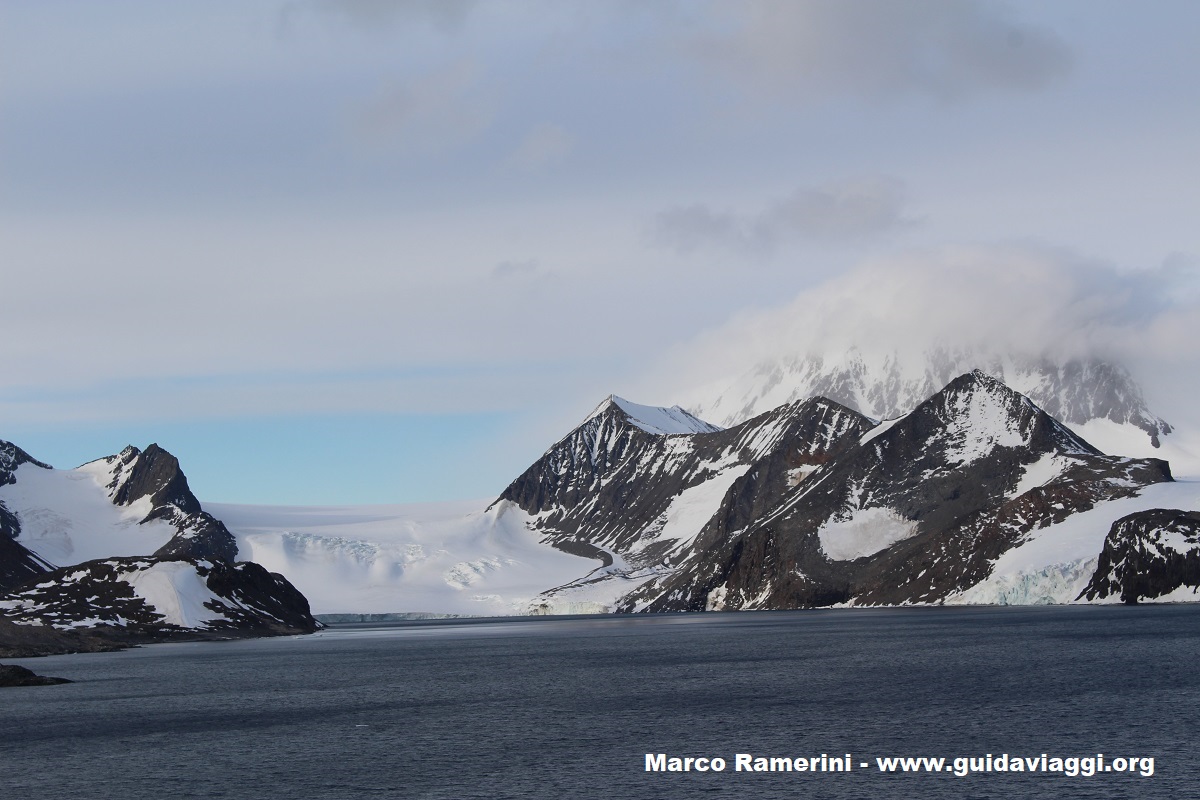This post is also available in:
![]() Deutsch
Deutsch
Antarctic Sound is a body of water located at the northern end of the Antarctic Peninsula at a latitude of about 63 ° south. This arm of ocean separates the Trinity Peninsula from the Joinville, D’Urville, Dundee islands and the smaller Bransfield and Anderson islands. South of Anderson island there are the gulfs of Erebus and Terror which are part of the Weddell Sea.
Antarctic Sound was first explored by the Swedish Antarctic Expedition in 1902. Today it is one of the destinations of cruise ships visiting Antarctica. Antarctic Sound extends for over 50 km in width and has a variable length between 13 and 20 kilometers. Sometimes, even during the summer months, it is occupied by floating ice. Usually these are tabular icebergs that come off the Larsen Ice Shelf, a huge ice pack that occupies the northwestern part of the Weddell Sea.

THE NORTH POINT OF THE ANTARCTIC CONTINENT
In the stretch of coast known as Trinity Peninsula (Península Trinidad), more precisely along the Tabarin Peninsula, on Punta Foca in Hope Bay (Bahía Esperanza) there is the Argentine scientific base Esperanza. This is one of the Antarctic bases that remain open throughout the year. The Esperanza Base has the particularity of being the first place of birth of a child in Antarctica, this happened for the first time in 1978. Around the Argentine base there is a large colony of Adelia penguins (Pygoscelis adeliae), the latest estimates indicate their consistency in approximately 125,000 couples.
The Trinity Peninsula forms the northernmost part of the Antarctic continent. The peninsula extends north-east for 130 km. The northernmost point of the continental mass of Antarctica is the Prime Head promontory located at a latitude of 63º13 ‘South.

THE ANTARCTIC SOUND
Antarctic Sound is a sea arm that is difficult to navigate due to the presence of huge icebergs coming from the Antarctic ice floe. Most of these icebergs were formed by the Larsen Ice Shelf. The area is characterized by strong winds blowing from the interior of the continent and pushing the huge icebergs from the south. Navigating through Antarctic Sound offers a breathtaking view of the Joinville islands, the Antarctic Peninsula and hundreds of icebergs. There is also the opportunity to admire typical Antarctic animals such as penguins and Weddell seals.
This post is also available in:
![]() Deutsch
Deutsch
